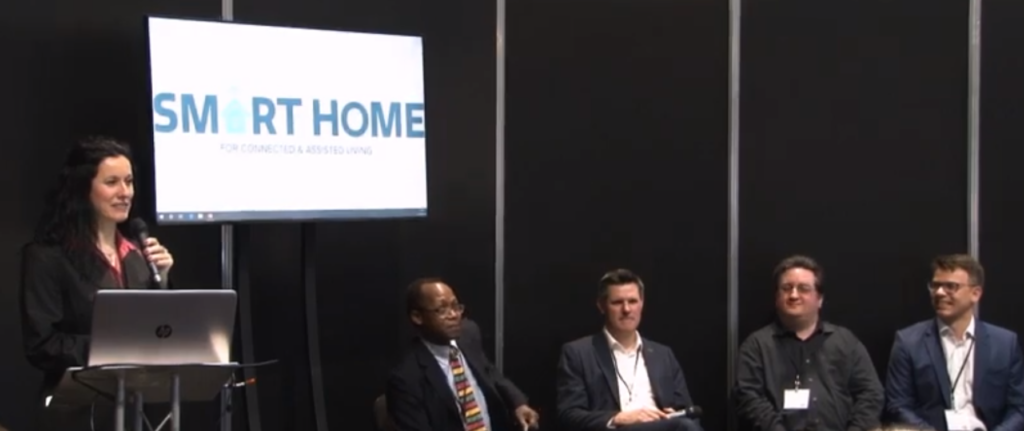
By Livia M. Rosu, Marketing Chair of HomeGrid Forum
Last week I was speaking at Smart Home Expo 2019 at the NEC in Birmingham, UK, where I moderated the “Lighting: Bright ideas for the smart home” and “IoT: Bringing connectivity into the home” discussionpanels. The event featured more than 200 exhibitors and over 150 seminar sessions and showcased the fantastic progress that smart home technologies are making.
In the Lighting: Bright ideas for the smart home, we focused our dialogue on how smart lighting is changing the home and the benefits of a fairly new technology called Visible Light Communication (VLC), sometimes mentioned as ‘Li-Fi’. It is set to be the next major innovation in realising the full potential of both the Smart Home and the Smart City living experience.
VLC has great potential for Smart Homes with high density connectivity needs, especially where sensitive data needs to be transmitted between multiple connected devices within one room. This is because the light spectrum provides low latency and avoids the kind of interruption that can often happen with radio frequency spectrum during congested periods. It also supports larger bandwidths, it can act as both a source and receiver, it has low power consumption, offers enhanced security and is easy to install. This is why the VLC market is growing at such an unprecedented rate.
VLC and Wi-Fi are both wireless technologies that can complement each other for different use cases.
On one hand, Wi-Fi provides greater freedom of movement, as signals can extend throughout the home and through walls to ensure full home coverage for consumers. On the other hand, VLC requires a line of sight between a lightbulb (LED) transceiver and a connected device, meaning that it cannot pass through walls. For environments such as schools, hospitals, airports or government buildings, where communication channels carry more sensitive information that can be a target of cyberattacks, VLC reduces electromagnetic interference and eliminates the risk of data interception by outsiders which are out of sight, therefore offering a vastly enhanced security platform.
For VLC to reach its full connectivity potential, in-home wiring must also be high quality to provide a strong backbone to support the capabilities of VLC. HomeGrid Forum recommends the unified deployment of G.hn to meet the reliability demands of Smart Homes and VLC technology medium.
Consumers are going through a period of unparalleled change. It is no longer just about connected devices, but a whole new suite of applications and capabilities that will be delivered by a range of technologies and Visible Light Communication is a very exciting one with an enormous potential.
The Smart Grid market is expected to grow from $23.8 billion to $61.3 billion by 2023, to facilitate smart cities – this is not an industry that is set to slow down any time soon.
